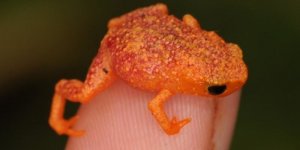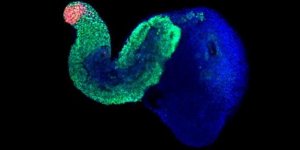| News / Science News |
Simple animals could live in Martian brines
Planetary scientist Vlada Stamenković of the NASA Jet Propulsion Laboratory and colleagues have developed a new chemical model of how oxygen dissolves in Martian conditions, which raises the possibility of oxygen-rich brines; enough, the work suggests, to support simple animals such as sponges.

Halichondria panicea or the breadcrumb sponge, example of a simple sponge with low oxygen requirements. ![]()
The atmosphere of Mars is far too thin for humans to breathe or for lungs like ours to extract any oxygen at all. It has on average only around 0.6% of the pressure of Earth's atmosphere, and this is mainly carbon dioxide; only 0.145% of the thin Martian atmosphere is oxygen.
The new model indicated these minute traces of oxygen should be able to enter salty seeps of water on or near the planet's surface at levels high enough to support life forms comparable to Earth's microbes, possibly even simple sponges.
Some life forms can survive without oxygen, but oxygen permits more energy-intensive metabolism. Almost all complex multicellular life on Earth depends on oxygen.
Stamenković et al cite research from 2014 showing some simple sponges can survive with only 0.002 moles of oxygen per cubic meter (0.064 mg per liter).
Some microbes that need oxygen can survive with as little as a millionth of a mole per cubic meter (0.000032 mg per liter). In their model, they found there can be enough oxygen for microbes throughout Mars, and enough for simple sponges in oases near the poles.
In 2014, also suggesting multicellular life could exist on Mars, they studied some lichens, including Pleopsidium chlorophanum, which can grow high up in Antarctic mountain ranges. They showed those lichens can also survive and even grow in Mars simulation chambers.
The lichens can do this because their algal component is able to produce the oxygen needed by the fungal component. Stamenković et al's research provides a way for oxygen to get into the brines without algae or photosynthesis.
Stamenković et al found oxygen levels throughout Mars would be high enough for the least demanding aerobic (oxygen using) microbes, for all the brines they considered, and all the methods of calculation.
They published a detailed map of the distributions of solubility for calcium perchlorates for their more optimistic calculations, which they reckoned were closer to the true case, with and without supercooling.
The lowest concentrations were shown in the tropical southern uplands. Brine in regions poleward of about 67.5° to the north and about 72.5° to the south could have oxygen concentrations high enough for simple sponges.
Closer to the poles, concentrations could go higher, approaching levels typical of sea water on Earth, 0.2 moles per cubic meter (6.4 mg per liter), for calcium perchlorates.
On Earth, worms and clams that live in the muddy sea beds require 1 mg per liter, bottom feeders such as crabs and oysters 3 mg per liter, and spawning migratory fish 6 mg per liter, all within 0.2 moles per cubic meter, 6.4 mg per liter. (Wikinews)
YOU MAY ALSO LIKE



